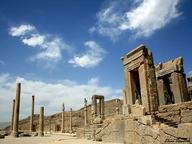Quiz Answer Key and Fun Facts
1. In Ancient Persia what were the "king's eyes"?
2. Which Persian king was victorious at the Battle of Thermopylae?
3. Which ruler founded the city of Persepolis?
4. Architecture played a huge role in the grand image of the Persian Empire. To this day the ruins of Persepolis can still be seen in modern day Iran, but what does Persepolis actually mean?
5. Which mythical animal, with the head and wings of an eagle and the body of a lion, was depicted in Persian architecture?
6. Which breed of horse originated in ancient Persia?
7. What weapons did an Immortal carry?
8. The Persians designed many artifacts that today are still being used in some shape or form by people everyday, but what was a rhyton?
9. The Persians believed in a supreme god called Ahura Mazda, who represented the wisdoms of goodness. Darkness and evil were represented by Ahriman, who was also known as Angra Mainyu. But which god protected the bridge of heaven?
10. Alexander the Great led his troops to victory over the Persians at the Battle of Granicus which paved the way for the demise of the great Persian Empire. Many battles ensued, but which was regarded as the final battle, ending the Persian domination over Greece?
Source: Author
doomed
This quiz was reviewed by FunTrivia editor
ing before going online.
Any errors found in FunTrivia content are routinely corrected through our feedback system.

